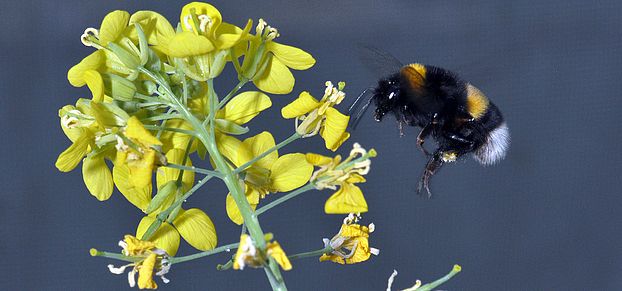Interplay of Pollinators and Pests Influences Plant Evolution

Brassica rapa plants pollinated by bumblebees evolve more attractive flowers. But this evolution is compromised if caterpillars attack the plant at the same time. With the bees pollinating them less effectively, the plants increasingly self-pollinate. In a greenhouse evolution experiment, scientists at the University of Zurich have shown just how much the effects of pollinators and pests influence each other.
Better understanding of the mechanisms of evolution
The study shows the importance of interactive effects in the evolution of diversity. If the combination of selective agents changes, for example through loss of habitat, climate change, or a decline in pollinators, it can trigger rapid evolutionary change in plants. “The environmental changes caused by humans affect the evolutionary fate of many organisms. This has implications in terms of ecosystem stability, loss of biodiversity, and food safety,” says Florian Schiestl. He believes that an understanding of these mechanisms has never been more important than it is now.
This research was a carried out by SPSW member Florian Schiestl and his doctoral student Sergio Ramos at the Department of Systematic and Evolutionary Botany, University of Zurich.
Reference publication
Sergio E. Ramos, Florian P. Schiestl.
Rapid plant evolution driven by the interaction of pollination and herbivory.
Science. April 11, 2019. DOI: 10.1126/science.aav6962
Source
University of Zurich News, English and German
